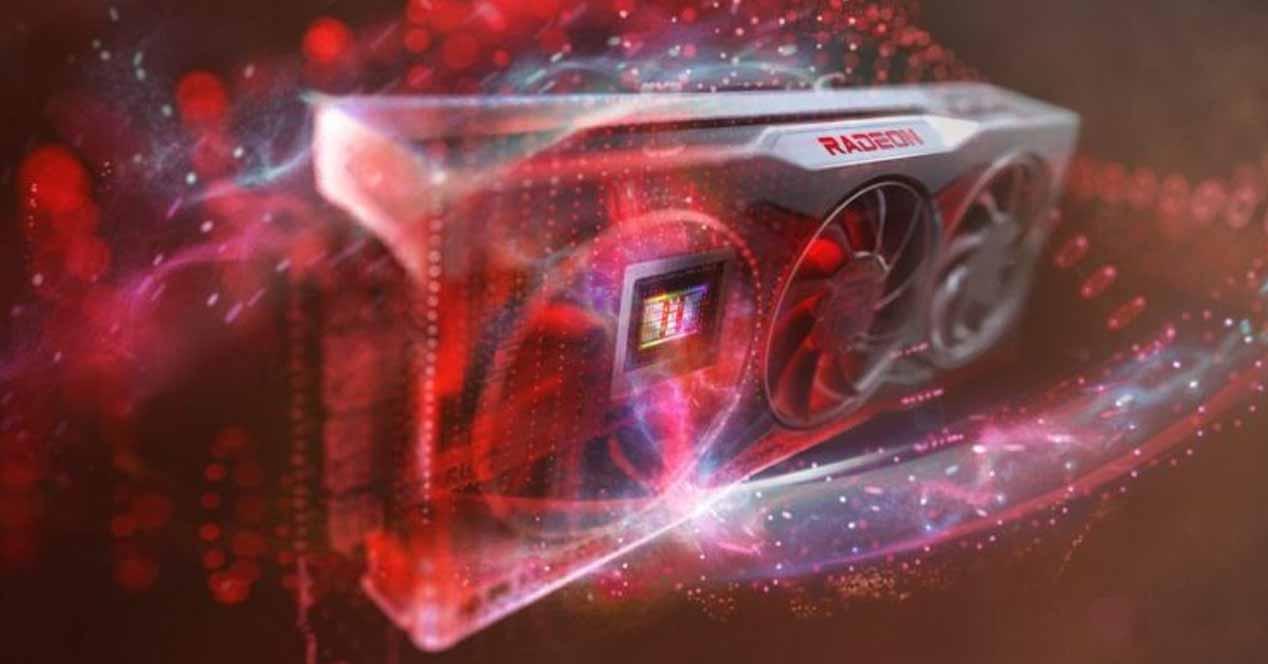The AMD RDNA 3 line will include monolithic GPUs and MCMs that will power the next generation Radeon RX 7000 graphics cards; Lately it has been reported that graphics chips 3X ships They will be starting production soon, so it is still too early to know if the information used to visualize these matrices is reliable or not, although we have to say that it comes from sources which were quite precise in their previous leaks. In any case, you should keep in mind that this no information confirmed by AMD and therefore it must be treated as such.
AMD Navi 32 RDNA 3 GPU for Radeon RX 7700 Series
The AMD Navi 32 GPU will be one of two MCM GPUs included in the first generation of RDNA 3 dedicated graphics. This GPU would have two GDC (Graphics Compute Dies) and a solitary MCD (Multi-Cache Die); The die is very similar to the Navi 31 flagship we saw earlier, but it has one less shader motor in each of its dies. The AMD Navi 32 GCD should use the process node of 5nm from TSMC
Each of the GCDs has 2 Shader Engines (4 in total) and each of them has 2 Shader Arrays (2 by SE, 4 by GCD, 8 in total), each consisting of 5 WGP (40 in total) and each WGP with 8 SIMD32 units with 32 ALUs (320 in total). These SIMD32 units combine to form 5,120 cores per GCD to give us a total of 10,240 cores.
The MCD Navi 32 RDNA 3 will connect to both GCDs via a next-generation Infinity Fabric connection and have 384MB of them available. Each GPU must also include 3 32-bit memory patch links, for a total of 6 32-bit memory controllers to make up a 192-bit interface
That would take the performance of the Radeon RX 7000 series (and more specifically the RX 7700 which would wear that dice) above the RX 6900 series, delivering a huge leap in graphics power for gaming. This will also increase the consumption figures, yes, since the current Radeon RX 6700 XT has 230W of TDP but in those terms we could be around the 270-300W
AMD Navi 33 RDNA 3 GPU for Radeon RX 7600 Series
The AMD Navi 33 GPU will launch the monolithic segment within the RDNA 3 family, as it will only feature a single die. The matrix is very similar to the flagship of the previous generation of the Navi 21 GPU and should use the manufacturing node of 6 nm from TSMC or Samsung for your design.
The Navi 33 GCD has two shader engines, each with 2 shader arrays (4 in total). Each Shader Array consists of 5 WGP (10 per SE, 20 in total) and each of them integrates 8 SIMD32 units with 32 ALUs (160 in total), which are combined to form 5,210 hearts, the same number as the Navi 21 XTX GPU.
RDNA 3 Navi 32 architecture should carry 256MB of Infinity Cache, and each GPU should include 2 32-bit memory patch links, giving us a total of 4 32-bit memory controllers for a total of 128-bit on its bus. memory interface. This would take the performance of the Radeon RX 7600 above the RX 6800 and RX 6900 series with a TDP of about 200 watts.
What about Navi 31 GPU for Radeon RX 7800/7900 series?
The configuration of the Navi GPU 31 shown here presents two GCDs and a single MCD. Each GCD has 3 Shader Engines (6 in total) and each has 2 Shader Array (12 in total). Each of them has 5 WGP (60 in total) and each of them integrates 8 SIMD32 units with 32 ALUs (for a total of 480); In total, we have 7,680 cores per GCD and 15,360 hearts in all.
The RDNA 3 MCD Navi 31 architecture will connect to two GCDs through the next generation Infinity Fabric with a total of 256-512MB. Each GPU also has 4 32-bit memory patch links, which gives us 8 32-bit memory controllers. for a total of 256 bits on its memory interface.
There have been several rumors that the upcoming RDNA 3 Radeon RX 7000 Series GPUs will outperform anything NVIDIA has to offer in terms of performance; It looks like AMD is taking the lead in delivering the first MCM-powered GPUs in its Radeon RX 7000 graphics lineup, but at the same time NVIDIA is expected to make a rapid transition to MCM which will deliver 3 times the performance of Ampere GPUs. , so the battle is served and in style.











